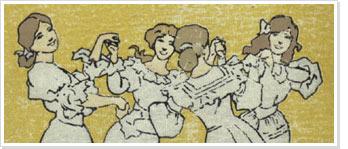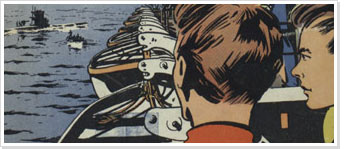Children's books from the Rotterdam Library > About the collection
The selection criteria for this collection of almost 300 children’s are defined by diversity in periods, publishers, authors, illustrators and genres. This has resulted in a cross section of children’s books published between 1840 - 1950. It was certainly not the compilers intention to limit themselves to old classic hits that are still easy to find (for instance Kruimeltje). On the contrary, she wished to include work from forgotten authors as Jan Feith, who wrote De avonturen van Flip en zijn speurhond and other books, and publishing houses that are no longer in existence, such as D. Bolle in Rotterdam and Valkhoff in Amersafoort. Moreover, books of historic value were added to the collection. For instance, children’s books which are set in the former Netherlands East Indies, like M. Ovink-Soer’s De Canneheuveltjes in Indië. But also a book of a questionable political sort, like Moeder vertel eens wat van Adolf Hitler by J. Haarer.
Illustrations: the seasoning
When it comes to children’s books, the illustrations are often of paramount importance. Pietje Bell by the Rotterdam author Chris van Abkoude is most recognizable by the face the illustrator Jan Rinke (who also lived in Rotterdam) created for him. And who isn't familiar with the illustrations Hans Borrebach made for Cissy van Marxveldt’s books? He also produced the photographs for the jackets of the books by Fenna Feenstra, Sanne van Havelte and others. In the period 1840-1950 people had high educational ideals. It is no wonder therefore that so many educators concerned themselves with children’s books (Andriessen, Van Abkoude, Van de Hulst and others). Women too made important contributions as writers and as reviewers: Nynke van Hichtum, Ida Heijermans and Nellie van Kol are well-known examples of such women.
The ravages of time
Many children’s book got lost simply for having been read to pieces certainly thin booklets such as the Sunday school ones, often published by Callenbach, that were given as a present to children on special occasions. Another category of booklets that often failed to survive is the fragile advertising brochure: people threw it away after reading it. More solid publications, like De club uit Rustoord by B. van Huet, published by the Rotterdam Van Nelle factory, have fortunately survived.
The final selection
In view of the available material, the selection is rather limited; for instance, it is possible that a particular author is represented in the collection more than once, whereas others are absent. A truly exhaustive selection is simply impossible to make: some of the very titles one had hoped to find, might never materialize. The present survey is meant to give interested visitors an impression of the children’s books published between 1840 and 1950, and to incite them to learn more about the subject. Who knows? You might rediscover some long-lost treasure!
